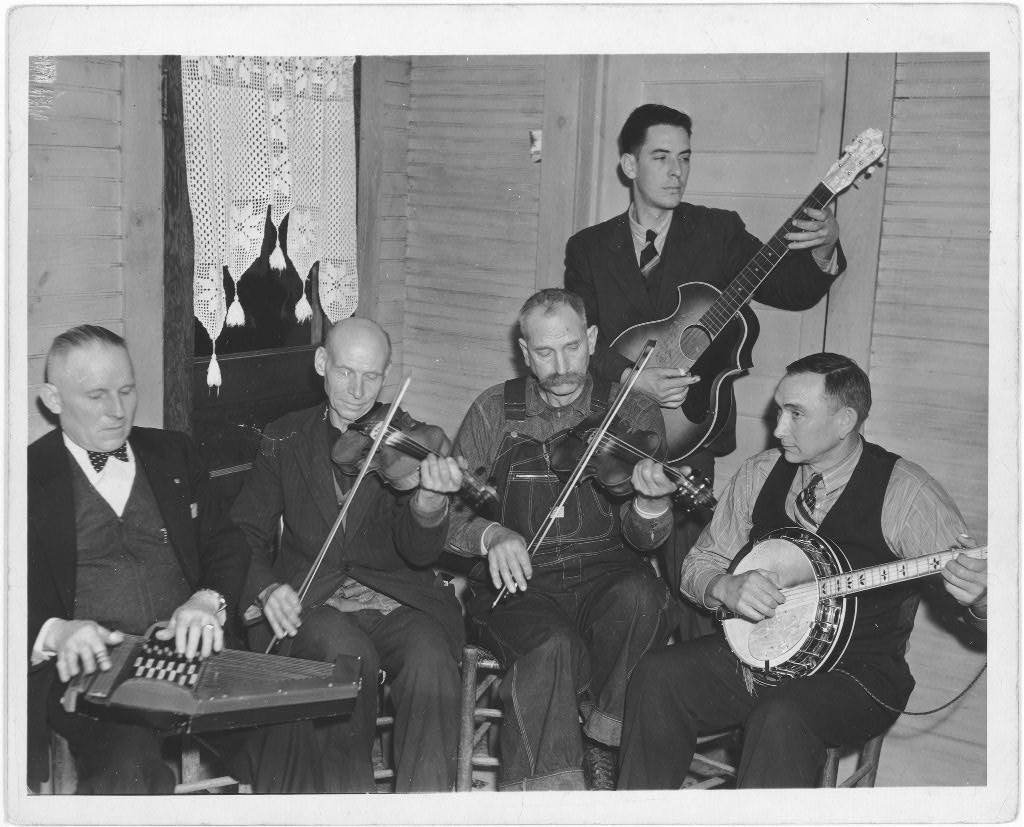APPALACIAN CULTURE OF MUSIC
Music has always been at the center of life in Southern Appalachia. The people of this region are descendants of Scottish-Irish, English, Welsh, German, and French settlers who came across the Atlantic 200 years ago, as well as people of African American and Cherokee heritage. An oral musical tradition came with these people, many of whom were laborers, servants, and farmers. Because the southern Appalachian settlements were isolated from other groups of people by the mountains, their music did not change very much over hundreds of years.

Southern Appalachian melodies are usually diatonic or modal and end on the tonic. They are in verse form. Duple and triple meters are used, sometimes changing to accommodate the words, melody, or the singer’s unique style. The literature includes songs, play-party games, and ballads. The most frequently heard vocal form from this region is the ballad—a song that tells a story. Each singer sings a ballad in his or her own personal way. Sometimes new words are sung to an old melody. A ballad can be based on an event in history, a humorous situation, a tragedy, happiness, a religious topic, a heroic deed, or the supernatural. Singing ballads provided entertainment for hundreds of years for people who did not have computers, TV, or radios. Because most of the original European settlers of Appalachia could not read, the stories contained in ballads were used to teach the history, ethics, and morality of the community. Characters in ballad stories who broke the rules suffered in some way. Some examples of ballads are "Old Joe Clark," "Barbara Allen," "Mister Frog Went A-Courtin’," and "Sourwood Mountain."
The southern Appalachian area is known for its instrumental traditions, particularly the music of the mountain dulcimer, fiddle, banjo, and limberjack.
The mountain dulcimer, one of the earliest North American folk instruments, looks like a long, thin violin with frets and three or four strings. On the mountain dulcimer the melody is played on the highest-pitched string, and the other strings are the drones. To play the dulcimer, hold the instrument across the lap. Use the right hand to pluck the strings with a quill, a pick, or a finger, and press the strings against the frets to change melody pitches with the left hand, or use a wooden slide.
The fiddle was brought to America by settlers from the British Isles. It was used as a solo instrument and to accompany dancing. The Appalachian fiddle is often held against the upper chest, not under the chin, and the bow is held a bit in from the end. This is also a very old position of classical violin playing that has remained unchanged in the isolated communities of Appalachia for many, many years. Modern classical violinists use a chin rest and hold the bow differently. Sometimes rattlesnake rattles have been placed inside the body of the fiddle for a percussive effect.
The banjo was brought to the southern Appalachian area by traveling minstrel shows or by European Americans who learned to play the instruments from enslaved African Americans while visiting plantations. The banjo is a fretted instrument with a round body and five strings and is either plucked with the fingers or played with a pick. Early banjos were modeled after a West African string instrument of a similar design.
A unique percussion instrument of Southern Appalachia is the limberjack—a wooden doll-like figure attached to a stick on the back. The player sits on one end of a board and suspends the doll over the free end of the board. When the player hits the free end of the board it moves up and down, hitting the doll and causing it to bounce around. The sound made by the bouncing wooden doll is similar to that made by Appalachian clog dancers.
A look at the music of Southern Appalachia gives us a fascinating peek into the past from the present. We can experience a living oral tradition that in some ways has not changed at all from the time settlers came over from Europe long ago.
